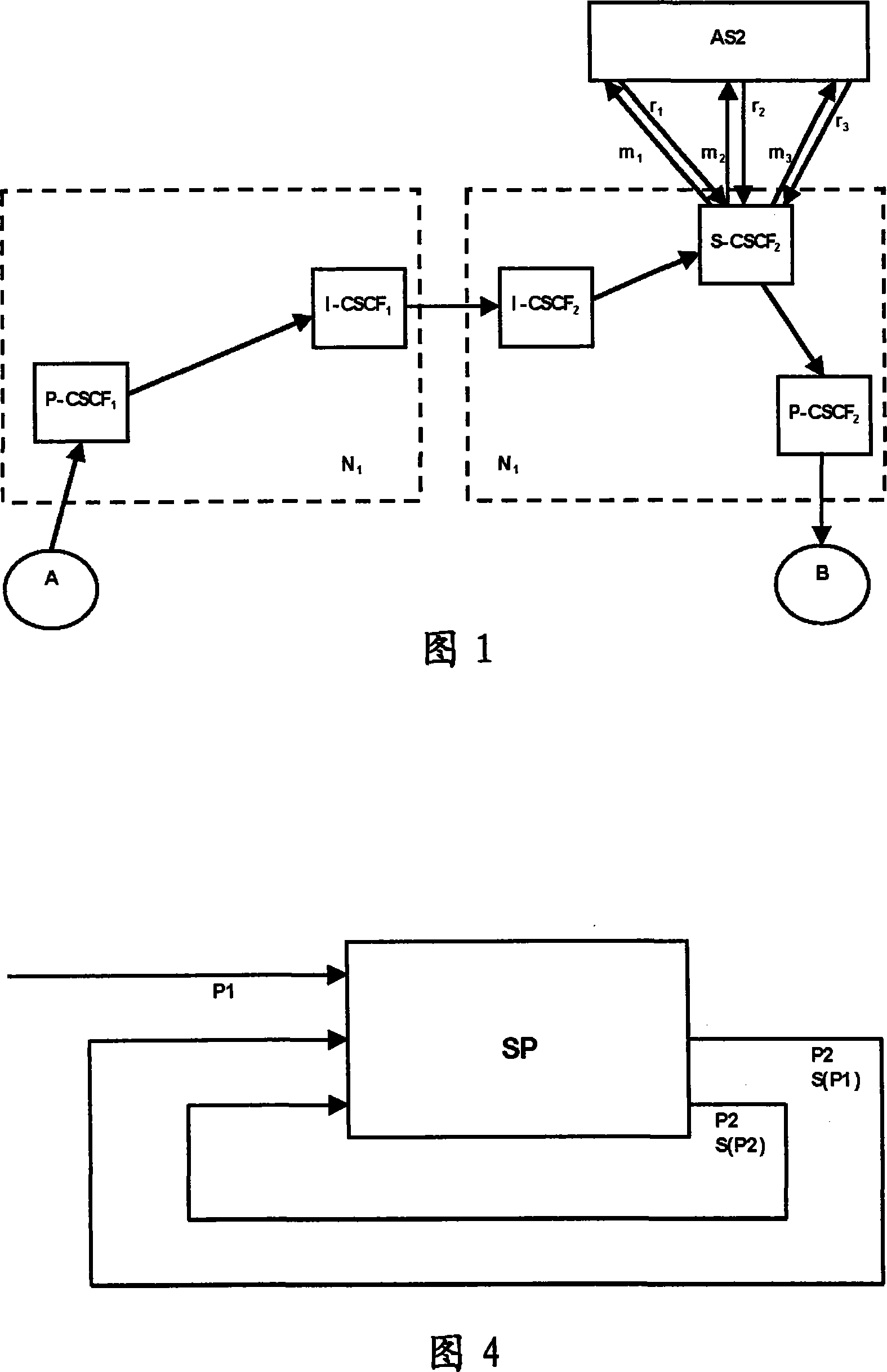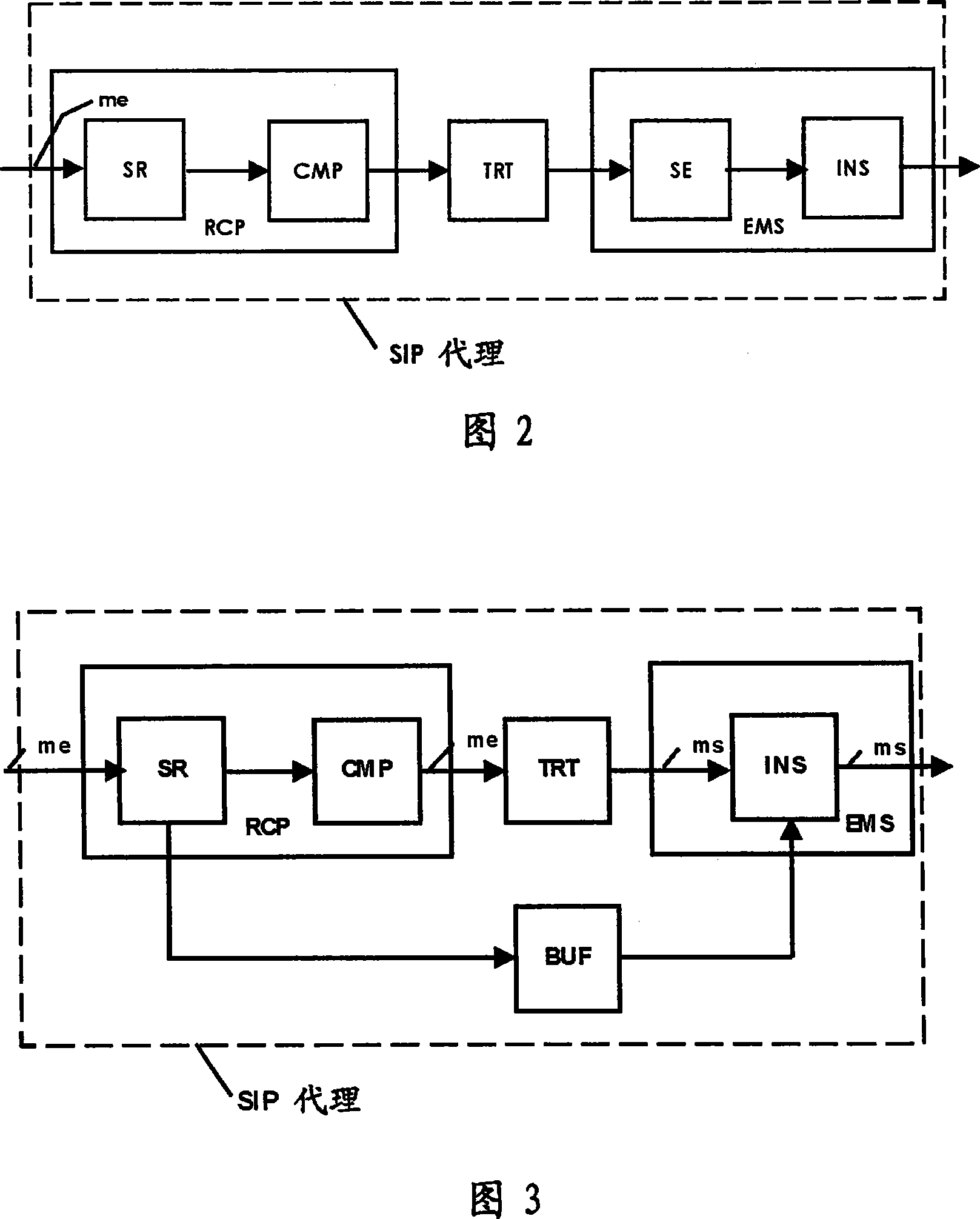Detection of loops within a sip signalling proxy
A technology of session initiation protocol and loop detection, which is applied in wireless network protocols, wireless communication, digital transmission systems, etc., can solve problems such as blocking communication networks, and achieve the effect of reducing additional costs
- Summary
- Abstract
- Description
- Claims
- Application Information
AI Technical Summary
Problems solved by technology
Method used
Image
Examples
Embodiment Construction
[0057] In a known manner, the SIP proxy can be divided functionally into a receiving means RCP, a processing means TRT and a sending means EMS.
[0058] The receiving means is the RCP, which receives the signaling message "me" originating from the communication network via the input interface of the SIP proxy.
[0059] These signaling messages "me" conform to the SIP protocol currently defined by IETF RFC 3261 and extensions that enrich this base protocol. Examples of extensions of the SIP protocol include RFC 3265 "Session Initiation Protocol (SIP)-Specific Event Notification", and RFC 3262 "Reliability of Provisional Responses in the Session Initiation Protocol (SIP)".
[0060] The receiving means RCP comprise a module SR for computing a signature from an input set of signaling message parameters.
[0061] This set of parameters is provided by RFC 3261. it includes:
[0062] - Flags of the "From" and "To" parameters, which identify the logical name of the sender and the d...
PUM
 Login to View More
Login to View More Abstract
Description
Claims
Application Information
 Login to View More
Login to View More - R&D
- Intellectual Property
- Life Sciences
- Materials
- Tech Scout
- Unparalleled Data Quality
- Higher Quality Content
- 60% Fewer Hallucinations
Browse by: Latest US Patents, China's latest patents, Technical Efficacy Thesaurus, Application Domain, Technology Topic, Popular Technical Reports.
© 2025 PatSnap. All rights reserved.Legal|Privacy policy|Modern Slavery Act Transparency Statement|Sitemap|About US| Contact US: help@patsnap.com


